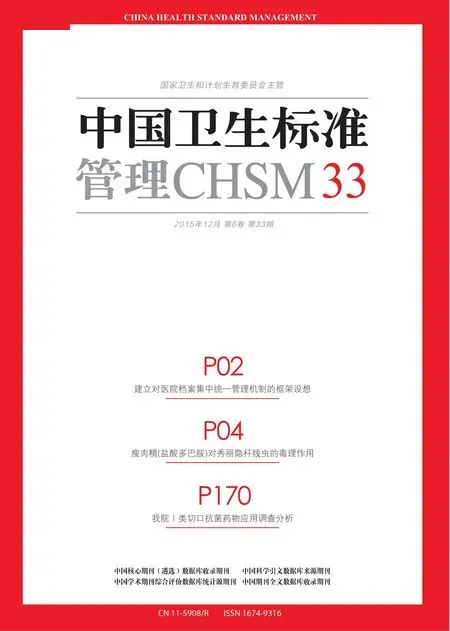骨髄基质细胞移植修复脊髓损伤的研究进展
许文胜 张 涛
骨髄基质细胞移植修复脊髓损伤的研究进展
许文胜 张 涛
目的 综述有关骨髄基质细胞移植治疗脊髓损伤的新进展。方法 广泛查阅近年来国内外相关文献对骨髓基质神经营养细胞NTFs、Schwann细胞以及神经胶质细胞的生物学特性、移植治疗SCI的实验研究、移行机制、治疗机制及相关问题进行讨论和分析。结果 通过大量神经科学方面的研究表明,NTFs、血旺细胞以及神经胶质细胞移植治疗SCI已有很大进展,移植治疗后,成熟的脊神经细胞残留着对信号作出反应的能力,而这些信号是促进神经系统发展成熟的保证,但其分子机制仍存在许多问题。结论 NTFs细胞、Schwann细胞以及神经胶质细胞移植治疗SCI是一种行之有效的方法,但仍有许多问题有待解决。
骨髓基质细胞;移植;脊髓损伤;脊髓修复
【Abstract】
Objective The new progress of the bone marrow stromal cell transplantation to treat spinal cord injuries are reviewed. Methods In recent years extensively reviewed the relevant literature on the biological characteristics of bone marrow stromal cells NTFs、Schwann cell and Glial cells,experimental study of transplantation SCI treatment, transitional mechanisms, therapeutic mechanism and problems are discussed and analyzed. Results Animal experiments and clinical studies have shown that, SCI has been great progress in the treatment of NTFs、Schwann cell and Glial cells transplantation, treatment after transplant, the transplanted cells can migrate to the injury site and differentiate into neuron-like cells and secrete neurotrophic substances, with the promotion of spinal cord injury the role of repair and recovery of neurological function, but there are many problems. Conclusion SCI is an effective method of NTFs、Schwann cell and Glial cells transplantation therapy, but there are still many issues to be resolved.
【Key words】Bone marrow stromal cell,Transplantation,Spinal cord injury,Spinal cord repair
脊髓损伤(spinal cord injury,SCI)常引起长期的感觉和功能障碍损伤,脊神经细胞发生一系列变化,包括受伤细胞坏死、永久性萎缩或修复,然而,损伤的神经轴突最初表现为生长趋势,随后其再生就由于神经轴突由内到外的疤痕组织而停止。临床上其发病率很高,但功能恢复却很差[1]。因此,由于脊髓损伤造成永久残疾的患者很多,目前,大量神经科学研究都集中在如何提高脊髓细胞损伤的功能恢复以及由此引发行为上和生理学上的恢复过程。本文通过分析大量的国内外文献,将研究集中在促进损伤的脊神经细胞恢复上,发现成熟的脊神经细胞残留着对信号作出反应的能力,而这些信号是促进神经系统发展成熟的保证,而且当用适当的信号对它进行刺激时,将出现很高的可塑性[2]。其中最基本的条件是损伤的神经轴突的再生依赖生长因子和抑生长因子的精确平衡。轴突残端或是在受损神经元核周体水平的神经营养因子基因过度表达,似乎是促进再生的可能手段。神经细胞的转导可以通过腺病毒带菌者完成,由此创造出更适合轴突生长的环境,从而达到功能恢复的目的[3-4]。
1 NTFs 神经移植或(和)神经营养因子的联合运用
目前主要使用的材料(坐骨神经,包括增生的雪旺氏细胞或膜滤器),损伤的细胞没有腔隙形成,神经胶质细胞增生集中在培养物质周边[5]。尽管在神经细胞末梢没有轴突穿过,但仍可见带有生长锥的再生轴突生长在培养物质中。自体外周神经移植也是提高中枢神经成活率的有效手段,成活率的提高又增强了神经营养因子的功能,其功能提高与一氧化氮合酶的增量调节相关,尽管正常的中枢神经并不表达NOS[6]。在成年老鼠体内成熟的挤压受损的神经细胞间隙接受肋间神经移植体后,从空白带到灰质会形成重组的特别通道,由于酸性纤维蛋白胶的作用,移植区域很稳定。在其它的研究中也提出了几种获取干细胞的方法[7]。例如15~24周的人胚胎大脑和雪旺细胞可以在加有表皮生长因子,成纤维细胞生长因子和白血病抑止因子的培养基中分裂和生长,从大脑细胞和雪旺细胞中大量生长的前体细胞,在培养基生长七天后成长为凹面有绒毛的球状体[8]。在接下来的5~7 d中,从大脑细胞而来的球状体使细胞表达特殊的神经元抗体(MAP22和神经元特殊中间丝),星形胶质细胞(神经胶质酸性蛋白)和少突神经胶质细胞(A007)[9-12],尽管来自雪旺细胞的球形细胞只表现出对神经胶质酸性蛋白的免疫反应。这些资料不仅提供了得到大量神经干细胞的原始资料,而且提供了来自中枢神经不同区域的神经上皮前体细胞的资料,尽管它们对生长因子的增生有着相似的反应,然而在成体动物的中枢神经系统中,它们分化为不同类型细胞的能力却不同[13-15]。
2 雪旺细胞和少突胶质细胞的移植
雪旺细胞移植已经成为修复SCI的重要方法。联合神经营养因子治疗的SCI移植从移植区到轴索末端都可以见到大量再生的轴突这些轴突的亚群主要分布在灰质区,类似于突触小体的轴突分支和成形结构,可以生长到SCI受损神经末梢6 mm的地方,神经营养因子的注入不会加速邻近的轴索残端轴突的生长[16]。 因此,SCI的移植作为再生细胞的桥梁,在使用神经营养因子灌注后,为再生的轴突能够到达脊髓损伤部位提供了可能。其它的证据也显示出少突神经胶质细胞前体细胞最终会在中枢神经脱髓鞘损伤后的恢复中发挥作用。将少突神经胶质细胞22型星形胶质细胞的祖细胞注入脊神经脱髓鞘损伤的成年鼠体内,开创了这种预先排除宿主介导的髓鞘再生的方法[17]。移植片的数量可以使髓鞘大量再生,因此提供有效的方法来处理神经前体细胞与通过前提移植术来修复损伤的中枢神经组织的目的是一致的。噬巨细胞和鼻粘膜表皮细胞噬细胞早期大量入侵可能是轴突在周围神经再生比在中枢神经再生效果好的原因之一[18]。
胚胎脊神经细胞在受损脊细胞的修复中的作用在近几年已经得到肯定。人胚胎脊神经细胞移植联合运用神经营养因子,这些营养因子有大脑衍生的神经移植的神经细胞营养因子,营养因子23、24,亲胆碱能神经元因子,它们可以诱发五羟色胺,去甲肾上腺素能,和皮质脊髓束的轴突在移植的神经细胞的大量分泌,这些实验在脊髓截瘫横断成年鼠身上的结果是运动功能的恢复。一段降钙素基因相关肽轴索的移植联合神经营养因子的治疗同样效果颇佳。它可以使受体组织和硝化纤维埋植剂之间的接口处的神经细胞生长比对照组动物高将近三倍[19]。许多神经纤维可以蔓延到受体组织的脊神经细胞的膜部到达受损区或者移植区。 移植联合神经营养因子的运用提高了外伤性脊髓损伤部位的上行感觉神经轴突再生的能力。
在其它的研究中[20-21]也提出了几种获取干细胞的方法。例如15~24周的人胚胎大脑和雪旺细胞可以在加有表皮生长因子,成纤维细胞生长因子和白血病抑止因子的培养基中分裂和生长。.从大脑细胞和雪旺细胞中大量生长的前体细胞,在培养基生长七天后成长为凹面有绒毛的球状体。在接下来的5~7 d中,从大脑细胞而来的球状体使细胞表达特殊的神经元抗体(MAP22和神经元特殊中间丝),星形胶质细胞(神经胶质酸性蛋白)和少突神经胶质细胞(A007),尽管来自雪旺细胞的球形细胞只表现出对神经胶质酸性蛋白的免疫反应[22]。这些资料不仅提供了得到大量神经干细胞的原始资料,而且提供了来自中枢神经不同区域的神经上皮前体细胞的资料,尽管它们对生长因子的增生有着相似的反应,然而在成体动物的中枢神经系统中,它们分化为不同类型细胞的能力却不同[23]。
向脊髓创伤处移植具有活力的神经元可替代坏死神经元来与未受损的脊髓建立联系。移植细胞包括单胺能神经元、运动神经元、背根神经节(DRG)神经元等。例如:胚鼠中缝核的5-HT能神经元植入成年大鼠损伤的脊髓后,不仅和单胺能纤维建立联系,还可下调受伤后过度表达的GABA能受体,动物功能的有部分恢复[24]。植入未损伤颈髓的胚鼠腰髓腹角的运动神经元可在灰质和白质中向脊髓吻、尾侧分别迁入2 mm,并发出突起与宿主神经元形成局部联系,存活达10周[25]。植入成年大鼠未损伤脊髓中的人胚DRG神经元可克服PNS-CNS界面与外周靶肌肉形成功能性突触,表明DRG神经元可用于SCI的修复[26]。
SCI破坏了胶质微环境,阻碍神经再生。如果通过植入胶质细胞重建适宜的胶质微环境,将有利于轴突再生。SC在PNG移植修复中起关键作用,为胶质细胞移植的首选。嗅鞘细胞(olfactory sheath cell,OEC)不仅像SC一样可形成髓鞘包裹轴突,还可随轴突进入CNS,推测也可为再生轴突提供通道,促进引导轴突再生。在Li首次报道移植OEC修复SCI之后,Lu[27]等将成年大鼠脊髓全横断4周后植入OEC,10周观察,发自中缝核的5-HT能纤维长入横断处尾侧脊髓,大鼠运动功能明显改善。还有作者发现植入脊髓创腔的未成熟星形细胞可相互连接成疏松网状结构填充创腔阻止脑脊膜的侵入,从而减轻瘢痕形成,利于受伤脊髓的修复[28]。
3 巨噬细胞和鼻粘膜表皮细胞
巨噬细胞早期大量入侵可能是轴突在周围神经再生比在中枢神经再生效果好的原因之一[29]。自体腹膜巨噬细胞移植到损伤的雪旺细胞一个月后,导致磷脂相关的糖蛋白表达显著减少,这种情形和神经炎入侵造成假定的背侧根的肽能轴索损伤相似此外,在巨噬细胞移植后出现明显的血管发生和雪旺细胞渗透。倘若再增加层粘连蛋白,一个适合轴突再生的良好的基底物质就形成了。在移植细胞的MRNA中发现肿瘤坏死因子[30-32]。因而,巨噬细胞移植将会成为引起大家兴趣的方法来加速中枢神经系统的轴突再生巨噬细胞将会通过降解抑止轴突再生的磷脂,以及通过加速含有层粘连蛋白的细胞外基质的生长来发挥他的优势。初步的实验证实了胎儿脊髓神经组织的巨噬细胞移植片移植到脊神经损伤的成年鼠体内,能够增强横断的背根处的感觉神经元轴突的再生能力[33-35]。位于SCI的活化的巨噬细胞或小神经胶质细胞,为促进感觉神经轴突的再生提供了良好的环境,通过与非神经元细胞的相互作用以及释放细胞因子也为神经轴突的再生提供了可行性因素。
最新文献中也提出鼻粘膜细胞在移植到SCI受损的神经元细胞后,通过分泌型神经生长因子,脑源性神经生长因子以及神经调节蛋白的作用,可以促进轴突的再生[36]。
4 存在的问题和展望
首先,对受损的脊髓进行有效的药物干预是必须的,以减少继发性神经损害。其次通过与非神经元细胞的相互作用以及释放细胞因子也为神经轴突的再生提供了实验依据,但神经细胞移植后如何调控基因及相关蛋白表达还不十分清楚,相信随着研究的深入,上述问题会最终得到解答。
[1] SaitoF,NakataniT,Iwase M,et al.Administration of cultured autologous bone marrow stromal cells into cerebrospinal fluid in spinal injury patients: a pilot study[J].Restor Neurol Neurosci,2012,30(2):127-136.
[2] RuffCA,Wilcox JT,FehlingsMG. Cell-based transplantationstrategies topromote plasticity following spinal cord injury[J].Exp Neurol,2012,235(1):78-90.
[3] OzdemirM, Attar A,Kuzu 1.Regenerative treatment in spinal cord injury[J].Curr Stem Cell Res Ther,2012,7(5):364-369.
[4] Vaquero J,Zurita M. Bone marrow stromal cells for spinal cord repair: achallenge for contemporary neurobiology. Histol Histopathol,2009,24(1):107-116.
[5] Kang ES, Ha KY, Kim YH. Fate of Transplanted Bone Marrow Derived Mesenchymal Stem Cells Following Spinal Cord Injury in Rats by Transplantation Routes[J].J Korean Med Sci,2012,27(6):586-593.
[6] 陈秉耀,侯树勋,吴闻文,等.大鼠脊髓损伤后不同时期移植异体骨髓间充质干细胞的局部分布[J],中华骨科杂志,2009(2):152-156.
[7] Kamishina H, Cheeseman JA,Clemmans RM.Nestin-positive spheres derived from canine bone marrow stromal cells generate cells with early neuronal and slial phenotypic characteristics[J].In Vitro Cell Dev Biol Amm,2008,44(5-6):140-144.
[8] Cho KJ,Trzaska KA,Greco SJ,et al.Neurons derived from human mesenchymal stem cells show synaptic transmission and can be induced to produce the neurotransmitter substance P by interleukin-l alpha[J]. Stem Cells,2005,23(3):383-391.
[9] 陈文芳,王连唐,石慧娟,等.骨髓间充质干细胞定向分化为软骨细胞[J].中国病理生理杂志,2004,20(7):1195-1199.
[10] Yoo JU,Barthel TS,Nishi K,et al.The chondrogenic potential of human bone-marrow-derived mesenchymal progenitor cells[J].J Bone Joint Surg,1998,80(12):1745-1757.
[11] 白鹤,赵劲民,杨志,等.大鼠骨髓基质干细胞体外培养及定向诱导分化为成骨细胞的实验研究[J].广西医学大学学报,2007,24(2):259-261.
[12] Pittenger M F,Mackay AM, Beck SC,et al.Multilineage potential adult human mesenchymal stem cells[J].Science,1999,284(5411):143-147
[13] ShenLH,Li J,Chen J,etal- One-year follow-up after bone marrow stromal cell treatment in middle-aged female rats with stroke [J].Stroke,2007,38(7):2150-2156.
[14] Choi JS,Leem JW,Lee KH, et al. Effects of human mesenchymal stem cell transplantation combined with polymer on functional recovery following spinal cord hemisection in rats[J].Korean J Physiol Pharmacol,2012,16(6):405-411.
[15] Sun C,Shao J, Su L, et al. Cholinergic neuron-like cells derived from bone marrow stromal cells induced by tricyclodecane-9"ylxanthogenate promote functional recovery and neural protection after spinal cord injury[J].Cell Transplant,2013,22(6):961-975.
[16] Kim KN,Oh SH, Lee KH, et al. Effect of human mesenehymal stem cell transplantation combined with growth factor infusion in the repair of injured spinal cor[J].Acta Neurochir,2006,99(Suppl):133-136.
[17] Sanchez RJ, Song S,Cardozo PF,et al. Adult bone marrow stromal cells differentiate into neural cells in vitro[J].Exp Neurol,2000,164(2):247-256.
[18] Bruder SP,Jaiswal N,Haynesworth SE. Growth kinetics,self-renewal,and the osteogenic potential of purified human mesenchymal stem cells during extensive subcultivation and following cryopreservation[J].J Cell Biochem,1997,64(2):278-294.
[19] Chen TL. Inhibition of growth and difforentiation of Osteoprogenitors in mouse bone marrow stromal cell cultures by increased donor age and glucocorticoid treatment[J].Bone,2004,35(l):83-95
[20] Amar AP,Levy ML.Pathogenesis and pharmacological strategies formitigating secondary damage in acute spinal cord injury[J]. Neurosurgery,1999,44(5):1027-1040.
[21] Honma T,Honmou 0,lihoshi S,et al. Intravenous infusion of immortalized human mesenchymal stem cells protects against injuiy in a cerebral ischemia model in adult rat[J].Exp Neurol,2006,199(1):56-66.
[22] Kwon BK,Tetzlaff W,Grauer JN, et al. Pathophysiology and pharmacologic treatment of acute spinal cord injury[J].Spine J.2004,4(4):451-464.
[23] 任长乐,吕德成,纪军,等.骨髓间充质干细胞移植对大鼠脊髓损伤后功能恢复的影响[J].中华实验外科杂志,2009,26(1):105-108.
[24] Tatagiba M , B rosam le C, Schwab M E. Regeneration of injured ax2 ons in the adult mammalian CNS.Neurosurgery,2013(40):541-546.
[25] Shifman M I, SelzerME. Exp ression of the netrin recep tor UNC25 in lamp rey brain: modulation by sp inal cord transection. Neurorehabil Neural Repair,2010(14):49-58.
[26] Gimenez y R ibotta M , Privat A. B iological interventions for SCI. Curr Op in Neurol,2008(11):647-654.
[27] Freed WJ,De Medinaceli L,W yatt RJ. Promoting functional plas2 ticity in the damaged nervous system. Science,2009(227):1544-1552.
[28] LN,Novikov LN,Kellerth JO.Survival effects of BDNF and NT23 on axotom ized rubrosp inal neurons depend on the temporal pattern of NTFs adm inistration. Eur J Neurosci,2011(12):776-780.
[29] Ohta M,Suzuki Y,Noda T,et al. Bone marrow stromal cells infused into the cerebrospinal fluid promote functional recovery of the injured rat spinal cord with reduced cavity fomiation[J].Exp Neurol,2007,187(2):266-278.
[30] PatelN,KlassertTE,Greco SJ,et al. Developmental regulation of TACl in peptidergic-induced human mesenchymal stem cells:implication for spinal cord injury in zebrafish[J].Stem Cells Dev,2012,21(2):308-320.
[31] 阮智,黄慧,孙建华,等.异体骨髓间充质干细胞移植治疗大鼠脊髓损伤.中国组织工程研究与临床康复,2010,14(36):6729-6732.
[32] 徐伟伟,姜晓丹.神经干细胞治疗应用安全性的研究进展[J].肿瘤,2011,31(1):82-84.
[33] Hofstetter CP, Holmstrom NA,Lilja JA, et al. Allodynia limits the usefulness of intraspinal neural stem cell grafts; directed differentiation improves outcome [J].Nat Neurosci,2005,8(3):346-353.
[34] Moviglia GA,Fernandez VR,Brizuela JA, et al.Combined protocol of cell therapy for chronic spinal cord injury. Report on the electrical and functional recovery of two patients. Cytotherapy,2006,8(3):202-209.
[35] Pal R,Venkataramana NK,BansalA,et al.Exvivo-expanded autologous bone marrow-derived mesenchymal stromal cells in human spinal cord injury paraplegia: a pilot clinical study.Cytotherapy,2009,11(7):897-911.
[36] WrightKT, ElMW, OsnianA,et al. Concise Review: Bone Marrow for the Treatment of Spinal Cord Injury:Mechanisms and Clinical Applications[J].Stem Cells,2011,29(2):169-178.
Research Progress of Bone Marrow Stromal Cell Transplantation for Treatment of Spinal Cord Injury
XU Wensheng ZHANG Tao First Affiliated Hospital of Baotou Medical,Neimenggu Baotou 014010,China
R329.2
A
1674-9316(2015)33-0075-02
10.3969/j.issn.1674-9316.2015.33.045
014010包头医学院第一附属医院

